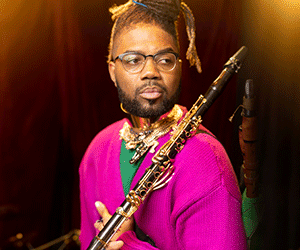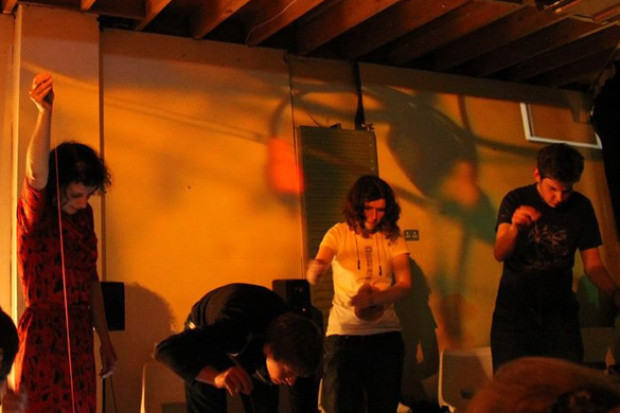Golfballs Out, Containers In
Containers is the product of an unlikely artistic combination between composers, furniture designers, and clarinetist Paul Roe. An exhibition of design at the Galway Arts Festival last year was intended to encourage creativity within the designers. Previously they were too engaged with workloads to give time to artistic creation. Before long, composers became interested in the concept. The end result was an exhibition of sound and containers varying from amphorae, boxes, shelving units, music stands and a piece entitled Container, which ‘holds a week’s worth of vegetables and fruit for a family of four’. The visitors were invited to write something on a piece of paper and leave it in a container of their choice. All the musical works (five in all) bar one, were written for clarinet or bass clarinet — some with digitally processed sound. Being such a unique instrument, the clarinet works well in filling the space associated with the solo repertoire.
The first piece of five on the CD is [B] contained by Katherine Noonan. The title reflects on the piece accordingly. It’s a very passive piece with little continuity, despite the well used digitally processed sound, which is sampled from a high b on clarinet. It opens well, however, with a fade into pretty much unfiltered clarinet samples. After the initial clarinet entry the digital sound comes to the fore and more or less remains there, outweighing the clarinet, which is giving interrupting gestures. It ends with the much strived for high b on clarinet.
The second piece by Jane O’Leary entitled New Work is scored for solo clarinet and is based on Brian McGee’s Amphora Container. O’Leary, describing the amphora in the program notes, says that ‘the gracefully curved lines and swirling shapes created musical images for me’. The image is conveyed well here with a sinister, dark feel. The piece opens with a mysterious growl in the lower range and is followed by a descriptive melody decorated with trills and grace notes. It is a wonderful, attention-grabbing opening and makes one’s ears cock on the first hearing. A stunning performance by Paul Roe, who as a member of Concorde has performed many of O’Leary’s works. The recording is so clear that you can draw circles around each note in the faster passages — each played with carefully thought out intonation.
The only piece of entire digital sound is by Michael Alcorn. Consisting of new and fresh sounds, it gives a metallic, watery feel. Alcorn explores the idea of containers being resonators, the samples coming primarily from household objects, and then using the computer as a ‘virtual resonator’. Twelve minutes is a lot to ask though, but if approached as sound rather than music, it’s probably the least challenging piece of all.
Michael Holohan’s The Lads is for solo clarinet and bass clarinet in two movements: the first, ‘Chatter-Box’, uses open and closed containers from the exhibition; the second, ‘O Breath’, uses only open containers. It is related to a design of the same name by Robert Tully, which consists of four containers named Cron, Finn, Conan and Dara. Each design has a specific persona. According to Tully, structures ‘have animated characteristics, with cartoon-like, pet-like appeal’. The music quickly became my personal favourite. Holohan’s excellent use of the clarinet register, sequence and rhythmic pulse creates a humourous, languid, flowing, melodic piece. The motif repetition easily clues in the listener into the pace of the music. Cron, the leader of the four, is employed here as a resonator. In the second movement, Cron is opened and the bass clarinet is used.
Rob Canning’s New Work for Clarinet and Electronic Sound is a good finishing piece for the album. Its dark tones leave the listener with a questioning, unresolved mood. Canning didn’t stray too far with his use of electronic sound, that is to say, a lot of timbre and musical effect could have been achieved with the use of standard musical instruments. It relates to a set of sycamore bowls by Roger Bennett and the music conveys the dark, smooth quality well.
But it’s great to hear new music that’s moving away from the ‘plinkey-plonk’ movement of shamelessly throwing golfballs into pianos and quoting T. S. Eliot in the program notes. It’s a worthwhile CD with an interesting artistic motivation at the core, which is necessary to have in order to build good work on. It also shows that modern composers are involving themselves (like everybody else) in the technology age.
Published on 1 May 2001
Donal Mac Erlaine is a music student in UCD, specialising in composition.










